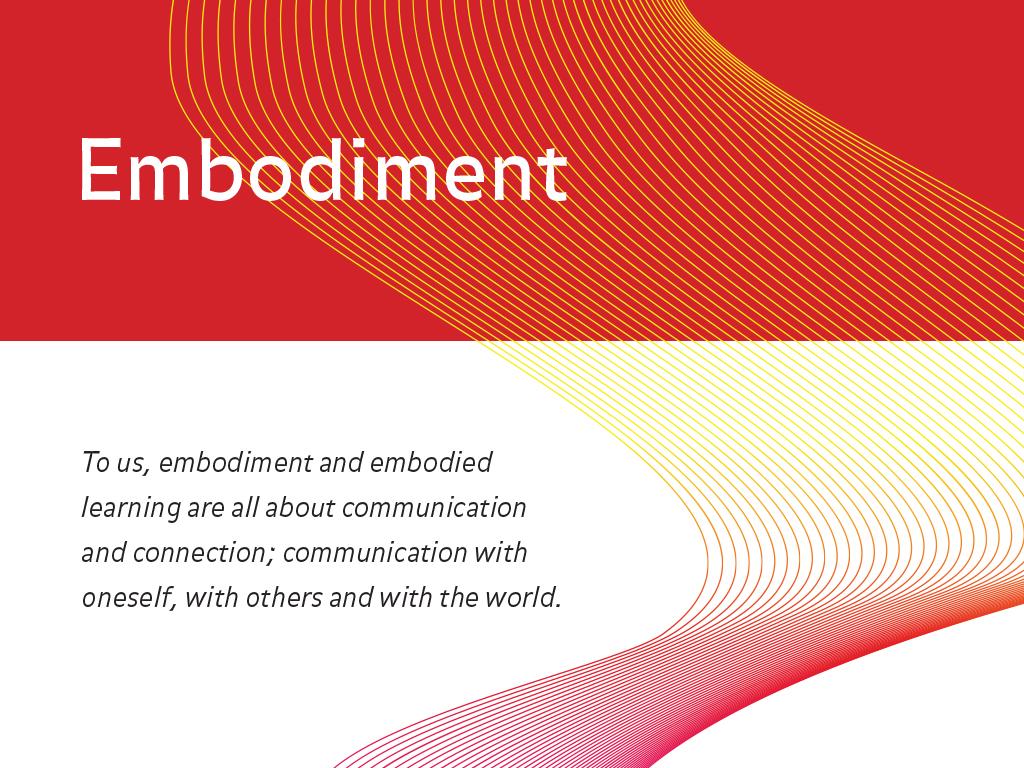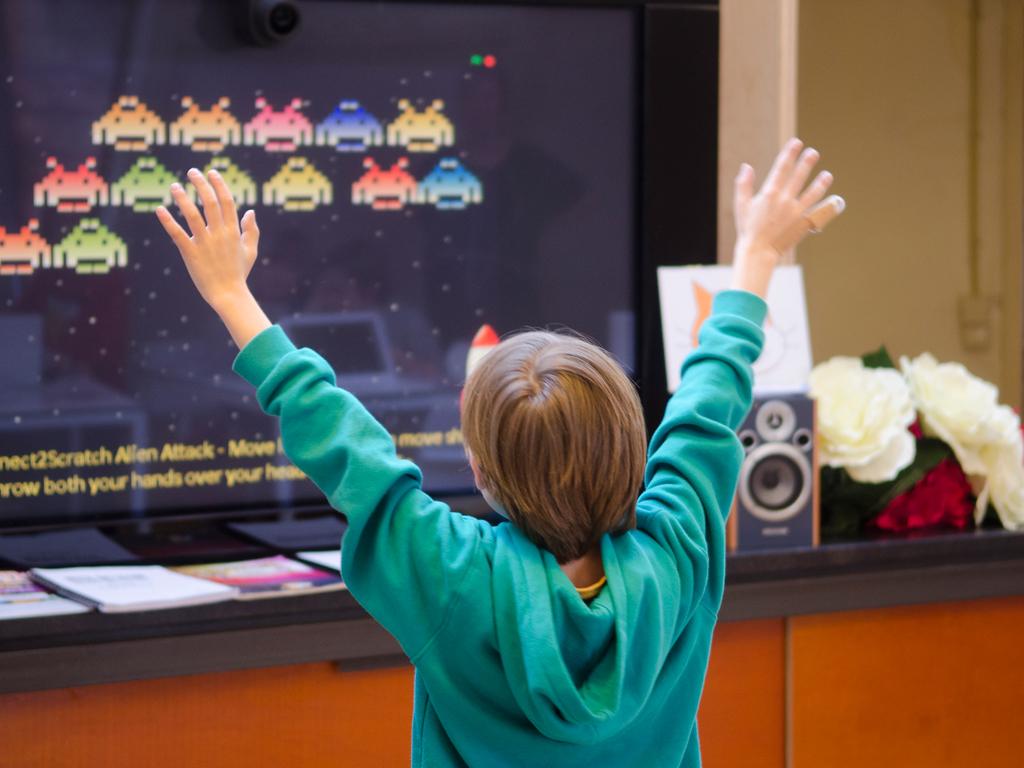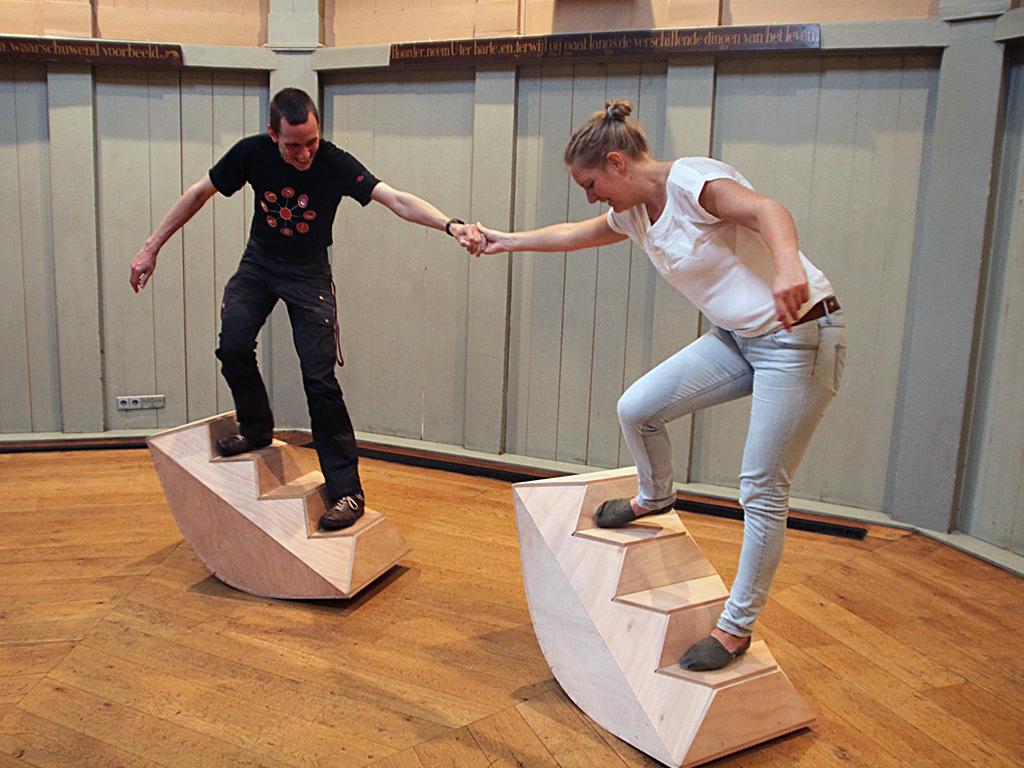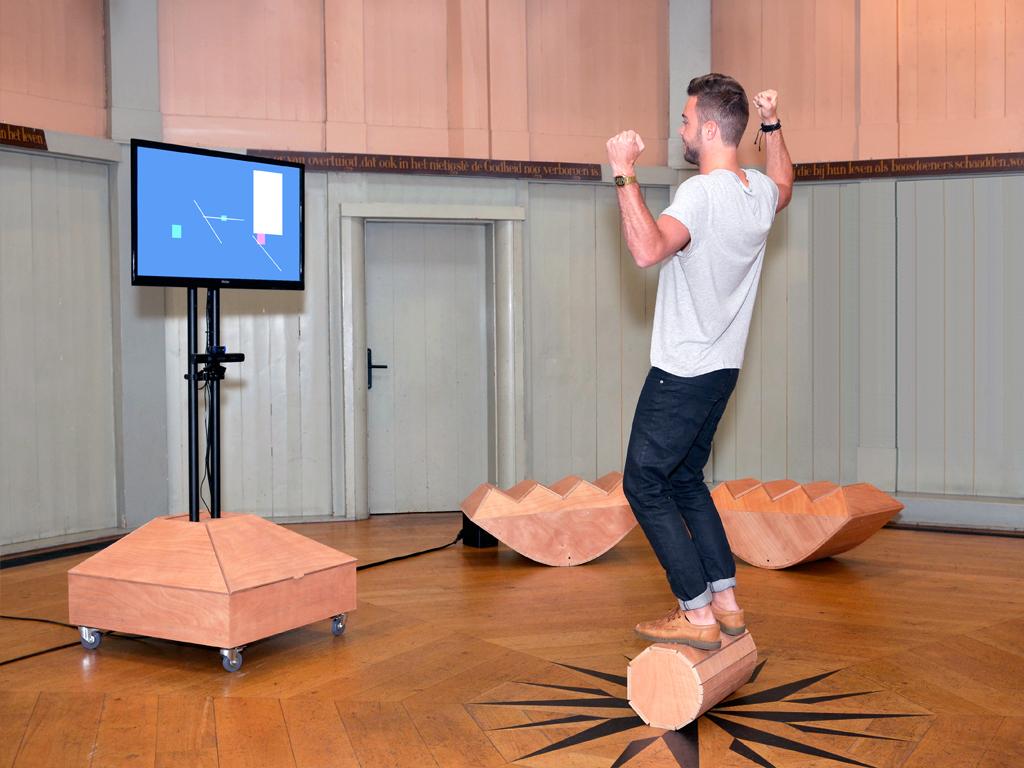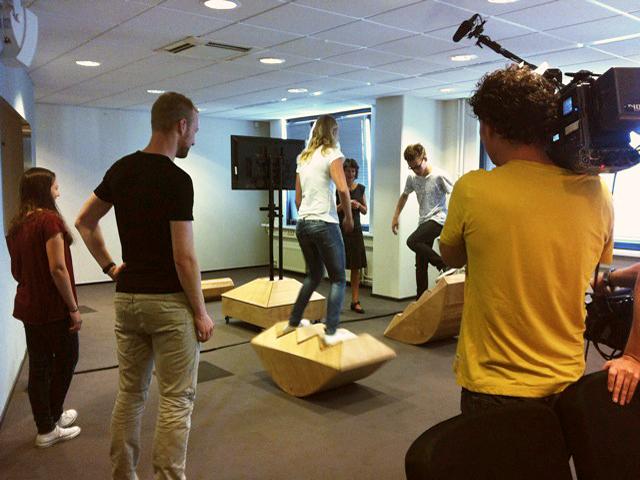Super Hero Island was a concept educational game package. The island is an environment where the children have their own super hero, whom they develop by playing little games on the island. While playing the games, not only do the superhero's skills and appearance develop, but the children themselves develop in the educational field. Because the game uses "movement in learning" principles, the children learn the material better and/or faster, according to the hypothesis of embodied learning.
Trainee Jelmer de Maat developed a Kinect-game for Waag that works with embodied learning. The results of his internship were used for the Play section of the COMMIT-programme in which Waag participated. Kennisnet Innovation interviewed Jelmer and mentor Meia Wippoo about his work:
What was the project about?
Meia: "The Creative Learning Lab develops engaging and accessible applications for schools which easily facilitate various learning styles, without teachers losing too much time. We've been researching embodied learning for a long time now and the assignment for Jelmer was a direct result. The aim of the project was that Jelmer would deliver a workable concept and prototype of a Kinect game that we could test, develop and manage further."
Jelmer: "The concept is called Super Hero Island and is an educational game package. The island is an environment where the children have their own super hero, whom they develop by playing little games on the island. While playing the games, not only do the superhero's skills and appearance develop, but the children themselves develop in the educational field. Because the games uses "movement in learning" principles, the children learn the material better and / or faster, according to the hypothesis of embodied learning."
What is embodied learning?
Meia: "In the classroom you are trained in skills such as math, language and knowledge of your environment. Although enough subjects offer space to try and experience these skills, formal education mainly focuses on the theoretical knowledge. Knowledge you take in by using just your head. But research has shown that experience with your whole body, and thus the development of competencies, ultimately is a much more effective way of learning. This is not just limited to learning from a book but involves the free space. Creative Learning Lab also adds an additional factor to embodied learning: the use of as much invisible technology as possible, making the most authentic learning experience that can be."
What is the added value of embodied learning compared to 'traditional' education?
Jelmer: "The combination of the physical with the theory. Several studies have shown that things stick better with adults and children when they are linked to a related movement. Children who act out a story with toys, for example, remember it better than children who read it twice. Also, when you read, it activates the areas in your brain that are responsible for the matching movement. If you read "John pets the dog", the brain areas that would perform this become active. Therefore, as an example, moving when reading helps to understand texts . These kinds of theories have led to the hypothesis that embodied learning works better than "normal" learning."
Would you (already) recommend embodied learning techniques at this time to schools / teachers?
Meia: "Yes. Education professionals can use this kind of technology and applications to develop new teaching methods that match teaching styles based on physical actions. The deployment of the entire body in a learning situation is something teachers often already do. With the advent of e.g. the Wii remote and the Kinect sensor, which are able to record and process relatively large movements, the use of technology in embodied learning has become a reality."
Why do you use a Kinect instead of an iPad, for example?
Meia: "The Kinect goes beyond the iPad, which only works with touch screen interaction. The Kinect and similar consoles work with 'gesture-based interaction. This makes new, intuitive forms of interaction possible. Embodied learning is really another way of learning, it's not just about deploying new technology in education. With an iPad you primarily make use of a new technology with opportunities that are definitely interesting. But that way of learning is still largely focused on the head alone."
What opportunities and challenges do you see for embodied learning?
Jelmer: "You have to keep it exciting enough and continue to update the contents, to keep older children interested too. Playing a game with things you learned long ago is less exciting. A challenge for schools is likely to find time and space in their existing programs. But if a school has the opportunity to do something with embodied learning, I would certainly recommend. It is not only very educational for the children but also for the teachers! In addition, children love to learn new things this way. The fact that you can play a Kinect game in class is too cool for words."
Meta data
Project duration
Links
Financiers
- COMMIT


